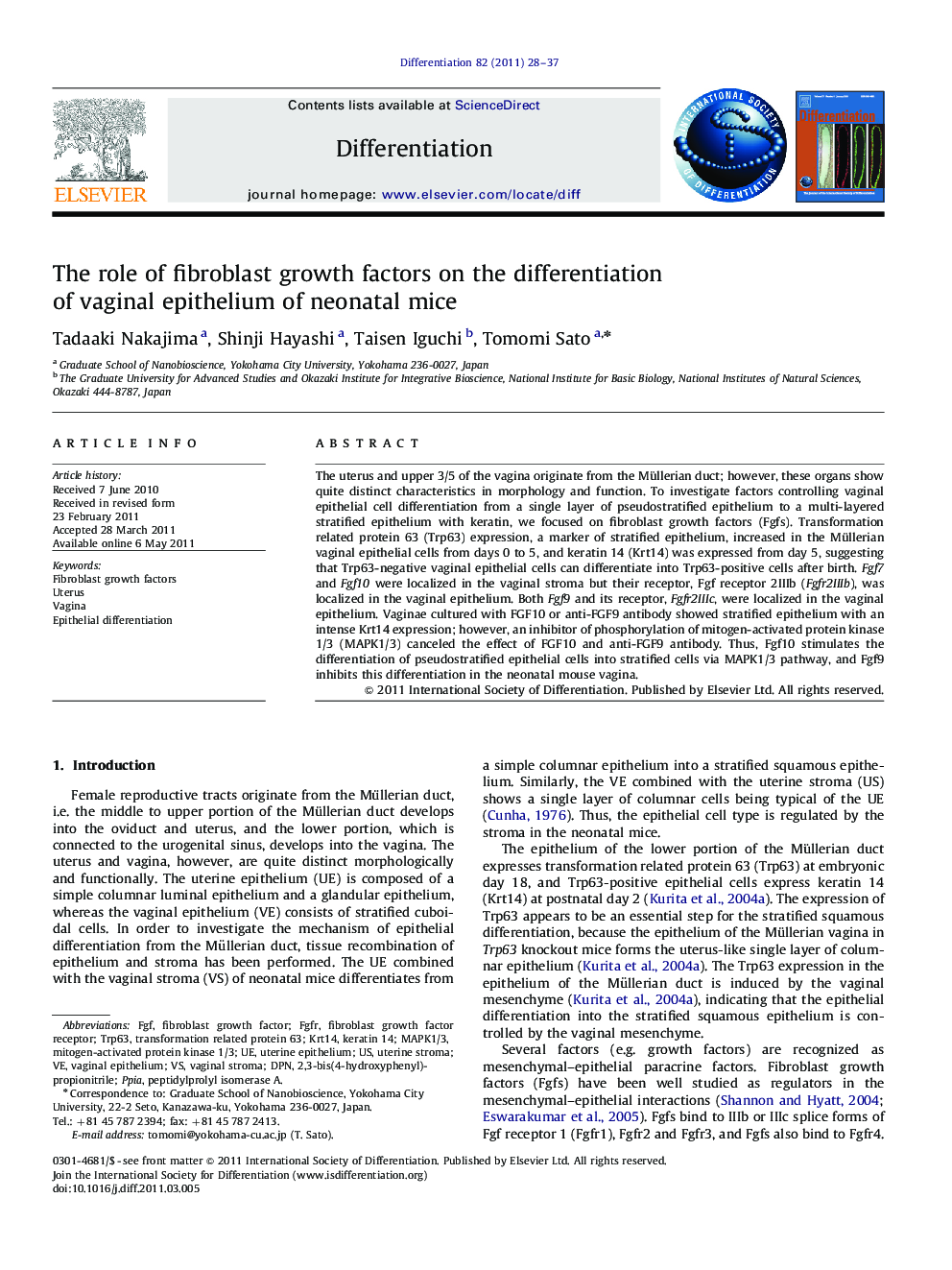| کد مقاله | کد نشریه | سال انتشار | مقاله انگلیسی | نسخه تمام متن |
|---|---|---|---|---|
| 2119591 | 1085404 | 2011 | 10 صفحه PDF | دانلود رایگان |

The uterus and upper 3/5 of the vagina originate from the Müllerian duct; however, these organs show quite distinct characteristics in morphology and function. To investigate factors controlling vaginal epithelial cell differentiation from a single layer of pseudostratified epithelium to a multi-layered stratified epithelium with keratin, we focused on fibroblast growth factors (Fgfs). Transformation related protein 63 (Trp63) expression, a marker of stratified epithelium, increased in the Müllerian vaginal epithelial cells from days 0 to 5, and keratin 14 (Krt14) was expressed from day 5, suggesting that Trp63-negative vaginal epithelial cells can differentiate into Trp63-positive cells after birth. Fgf7 and Fgf10 were localized in the vaginal stroma but their receptor, Fgf receptor 2IIIb (Fgfr2IIIb), was localized in the vaginal epithelium. Both Fgf9 and its receptor, Fgfr2IIIc, were localized in the vaginal epithelium. Vaginae cultured with FGF10 or anti-FGF9 antibody showed stratified epithelium with an intense Krt14 expression; however, an inhibitor of phosphorylation of mitogen-activated protein kinase 1/3 (MAPK1/3) canceled the effect of FGF10 and anti-FGF9 antibody. Thus, Fgf10 stimulates the differentiation of pseudostratified epithelial cells into stratified cells via MAPK1/3 pathway, and Fgf9 inhibits this differentiation in the neonatal mouse vagina.
Journal: Differentiation - Volume 82, Issue 1, July 2011, Pages 28–37